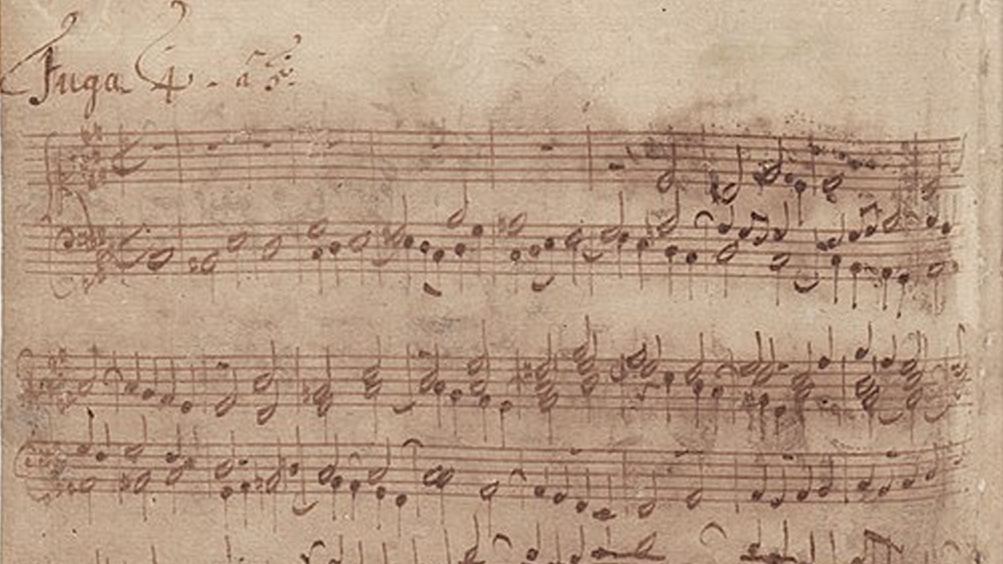The 19th century commentator, Hugo Riemann, described Bach’s Prelude and Fugue in C-sharp minor, BWV 849 as the “holy of holies.” The phrase, found in the Hebrew Bible, refers to the inner sanctuary of the Tabernacle, where the Shekhinah (God’s presence) appeared.
The fourth piece from Book 1 of Bach’s Well-Tempered Clavier, BWV 849 is solemn, meditative music filled with wrenching melancholy. The Prelude is a loure, a French Baroque dance which resembles a gigue in slow motion. It is a passionate and lamenting conversation between two voices, one occurring in the higher register and the other in the bass. The subject of the five-voice Fugue is dissonant and compressed. Made up of five pitches (C-sharp, B-sharp, E, D-sharp, C-sharp), the subject’s contour resembles a cross, the symbol of crucifixion, on the staff. The motif is derived from the Advent chorale, Nun komm, der Heiden Heiland (“Savior of the nations, come”). Unfolding over three themes, the Fugue delivers its most jarring dissonance in the final seconds before resolving with the sudden sunshine of a Picardy third.
This performance, recorded by the Netherlands Bach Society in Bois le Roi, France in September of 2016, features harpsichordist Bertrand Cuiller:
Featured Image: Bach’s manuscript for the Fugue in C-sharp minor

